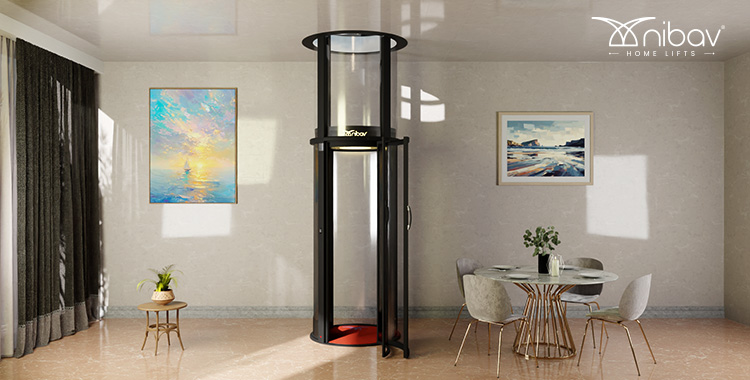Not long ago, elevators were considered industrial machines—large, noisy, and dependent on complex systems powered by oil, hydraulics, and heavy machinery. They belonged in commercial buildings, not private homes.
Today, this narrative has dramatically changed. The rise of modern home elevators has transformed residential mobility, replacing bulky equipment with sleek engineering, whisper-quiet operation, and eco-friendly systems that run with zero oil and extremely low energy consumption.
From compact cabins to transparent glass elevators, homeowners are embracing a new generation of elevator technology—one that is clean, efficient, and beautifully designed for modern living.
So how do these new models operate without the traditional heavy-duty setup? Let’s explore the clean energy revolution inside modern residential elevators.
The Shift Toward Eco-Friendly Home Mobility
Modern homeowners are more environmentally aware than ever. Sustainability plays a major role in renovation decisions, appliance purchases, and smart home upgrades. As a result, elevator manufacturers have re-engineered traditional systems to use:
-
No oils
-
No hydraulics
-
Minimal electricity
-
Clean air pressure or efficient motors
-
Environment-friendly materials
This shift has made the Home Elevator not just a convenience, but also a low-impact, green investment.
1. The Rise of Air-Driven Elevator Technology
One of the biggest innovations powering modern home elevators is air pressure technology, also known as pneumatic elevation. Instead of relying on oil-filled pistons or heavy cables, these elevators operate through the natural movement of air.
How it works:
-
A vertical cylinder forms the elevator shaft.
-
The cabin moves using controlled air pressure differences.
-
Turbines or vacuum pumps manage airflow at the top of the elevator.
-
The elevator uses gravity for soft, energy-efficient descent.
There is no oil, no counterweight, no machine room, and minimal mechanical complexity. This makes pneumatic glass elevators some of the cleanest and most sustainable models available today.
Energy benefits:
-
Only a small amount of electricity is used to ascend.
-
Descending requires no power—gravity does the work.
-
Lower electricity consumption than most household appliances.
It’s an elegant engineering solution that blends modern physics with residential convenience.
2. Gearless Motors and Low-Power Operation
Another breakthrough powering modern home elevators is the adoption of gearless traction motors. These motors are compact, efficient, and extremely quiet.
Why gearless systems matter:
-
No gears = less friction
-
Less friction = lower energy consumption
-
Fewer moving parts = lower maintenance
-
No oils or lubricants required
-
Smooth, comfortable ride
This is one of the main reasons modern home elevators can run on as little as the power of a household appliance.
Typical energy consumption comparison:
| Appliance | Approximate Power |
|---|---|
| Home Elevator | ~2–5 kVA |
| Hair Dryer | 1–2 kVA |
| Oven | 3–5 kVA |
| Air Conditioner | 1.5–3 kVA |
Modern elevators consume roughly the same—or even less—electricity than everyday appliances used daily by families.
3. No Hydraulics = No Oil, No Mess, No Environmental Risk
Traditional hydraulic elevators use large amounts of oil to move the piston that lifts the cabin. While effective in commercial settings, hydraulics can:
-
Leak oil over time
-
Damage floors and walls
-
Release emissions
-
Require costly maintenance
-
Cause environmental contamination if a leak occurs
By contrast, modern home elevators eliminate hydraulics entirely. That means:
-
No oil spills
-
No risk of toxic contamination
-
No odor
-
No dependency on messy machinery
This innovation not only protects your home—it protects the environment.
4. Energy-Efficient Standby Modes
Modern residential elevators don’t waste energy while idle. Built-in smart energy-saving features help reduce usage even further.
Standby efficiency features include:
-
Auto-shutoff for lights
-
Sleep mode when unused
-
Low-consumption control panels
-
Motion sensors
-
LED lighting systems
These features drastically reduce the elevator’s overall energy footprint, making the system ideal for energy-conscious homeowners.
5. Gravity-Assisted Descent
One of the most brilliant engineering elements in modern home elevators is gravity-assisted travel.
Here’s how it works:
-
Energy is primarily used to raise the elevator.
-
Descending uses zero energy—the elevator lowers naturally and safely.
-
Controlled pressure or motor braking ensures a smooth ride.
This gravity-based mechanism is the secret behind the extremely low power usage in many modern systems.
6. Sustainable Materials and Modern Design
Energy efficiency goes hand-in-hand with thoughtful design. Today’s glass elevators and residential lifts use:
-
Recyclable materials
-
High-strength polycarbonate
-
Aluminum and stainless steel
-
Low-impact components
-
LED-based illumination
These materials offer durability without environmental harm—and they enhance the aesthetic appeal of your home.
Glass elevators, in particular, create an open and modern feel, blending engineering with architectural elegance.
7. Low Maintenance = Lower Environmental Impact
Because modern home elevators use clean technology, maintenance is simpler and more affordable.
Low-maintenance benefits:
-
No hydraulic oil refills
-
No gear lubrication
-
Fewer mechanical repairs
-
Minimal component wear
-
Longer system lifespan
Reduced maintenance results in fewer replacement parts, less waste, and significantly lower long-term environmental impact.
A Cleaner, Smarter Future for Home Elevators
As technology advances, elevators are becoming smarter, quieter, and greener. What used to be a complex mechanical system is now:
-
Lightweight
-
Efficient
-
Oil-free
-
Eco-friendly
-
Designed for modern homes
-
Simple to install and maintain
For homeowners seeking convenience without environmental compromise, modern home elevators offer the perfect solution.
Whether choosing a compact air-driven model or a luxury glass elevator, you’re investing in a clean future—powered by engineering that respects your home and the planet.
